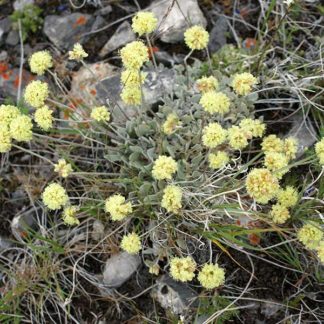July
Showing 61–72 of 200 results
-

Eremogone capillaris / fescue sandwort
- five petals, white, in clusters of ca. 3 flowers per stalk
- prominent stamens with large anthers
- grass-like (fescue-like) opposite leaves
- in clumps or mats, in rock cracks and rocky meadows
- alpine and subalpine
-

Eriophorum angustifolium / narrow-leaved cottongrass
- limited to bogs/fens with standing water
- "just a pointy-leaved plant" until the fruit develops
- fruits are big white, cotton-like tufts
-
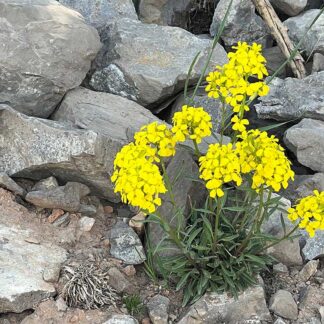
Erysimum asperum / prairie-rocket wallflower
- yellow flowers, large for a crucifer
- flowers in clusters above foliage
- oval/elliptical leaves, to 4" long... hairy
- long thin fruit pod (silique) perpendicular to stem, may curve upward
-

Erysimum capitatum / western wallflower
- yellow (usually) 4-petaled flowers at top of stem
- inflorescence may be as big as a baseball, and round
- mostly basal rosette of leaves
- cauline leaves narrow with small teeth
- siliques horizontal to nearly vertical; relatively long
- variety of habitats, but not wetlands
-
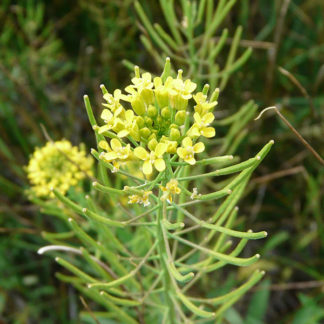
Erysimum cheiranthoides / wormseed wallflower
- yellow, 4-petaled flower, less than 1/3 inch across
- lance shaped or elliptical, sessile leaves varying little in size or shape
- leaf margins entire or coarsely toothed
- ribbed stems
- ascending or erect siliques with short pedicels
- disturbed and waste areas
-
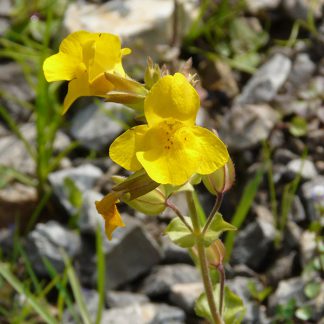
Erythranthe guttata / seep monkeyflower
- yellow flowers with red spots in clumps of 5 or more
- flowers large for the plant, but otherwise "normal" size
- two "lips" - lower lip larger than upper, each with 2 petals
- found in wetlands of all kinds
-
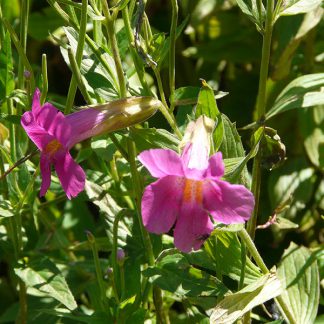
Erythranthe lewisii / Lewis’s monkeyflower
- pink to magenta with floral tube, two lips and yellow nectar guides
- usually stream-side in dense clumps
- striking
-
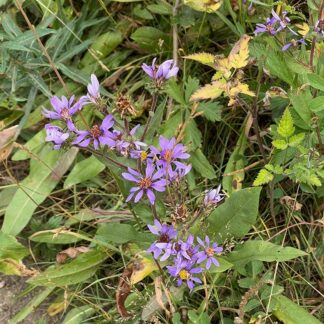
Eurybia integrifolia / thickstem aster
- purple composite with 10-20 ray florets
- entire, elongated leaves with short or no petioles
- exposed areas, mountain slopes, dry meadows, roadsides
- flowers in late summer and into September
-

Festuca idahoensis / Idaho fescue
- a bunchgrass growing in very dense clumps
- over-winters green; an early green grass in spring
- green to blue-green to silvery green leaves
- individual flowers in clusters of hairy spikelets on branched panicles; very dark purple or green
- seeds have large spines (awns) at the tips
-
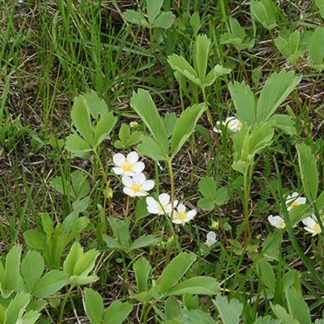
Fragaria vesca / woodland strawberry
- trifoliate, light green markedly toothed leaves
- clusters of hairy, 5-petaled white flowers on a soft-hairy stem
- plants spread by stolons
- fruit (if any) red with bumps where the seeds are
- spring/early summer bloom
- widespread
-

Frasera speciosa / monument plant
- striking, 4 petal flowers - green and white with purple flecks
- flowers held close in to stem
- tall flowering stalk (to chest high) from a base of large, elongated rosette leaves
Showing 61–72 of 200 results
